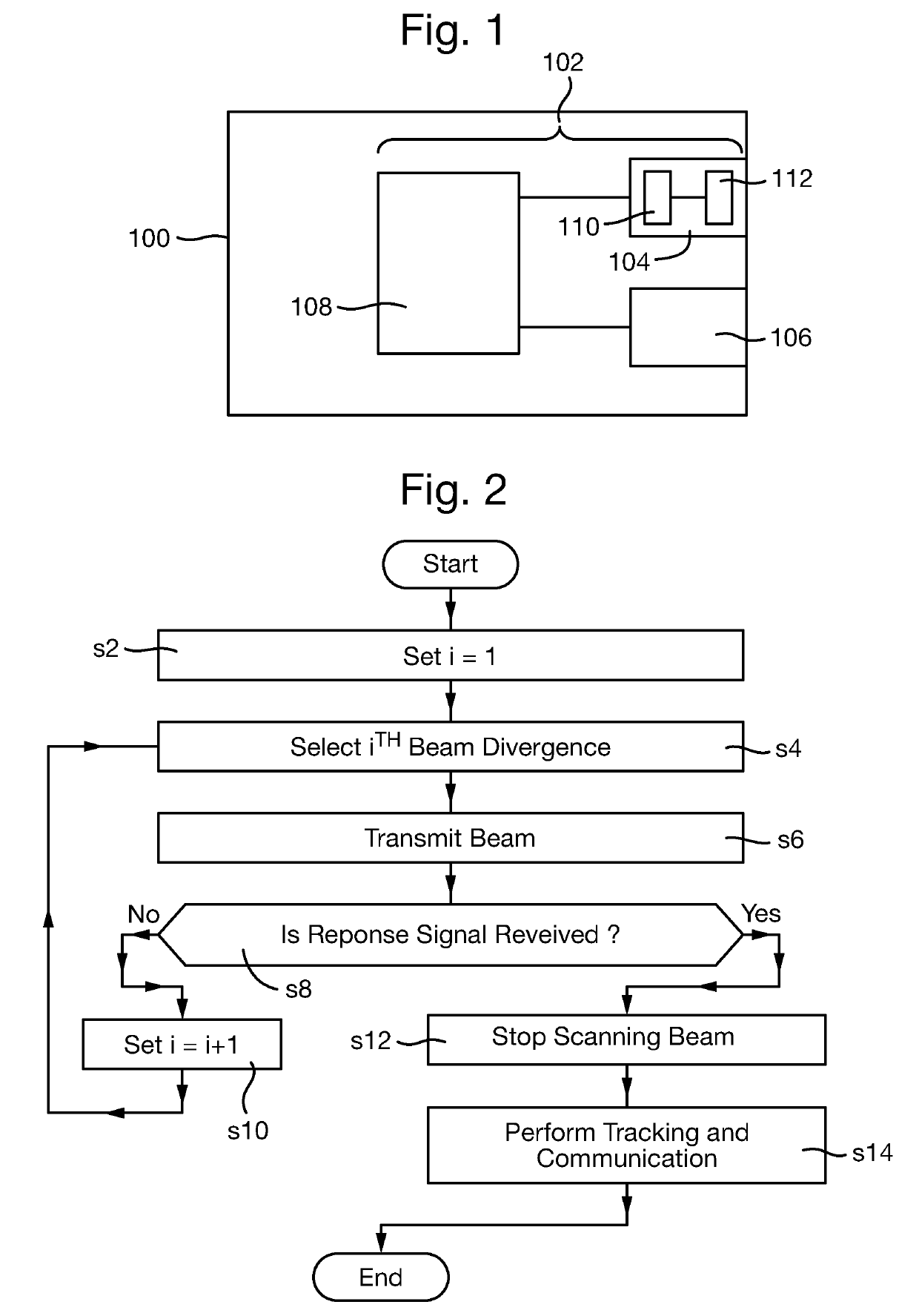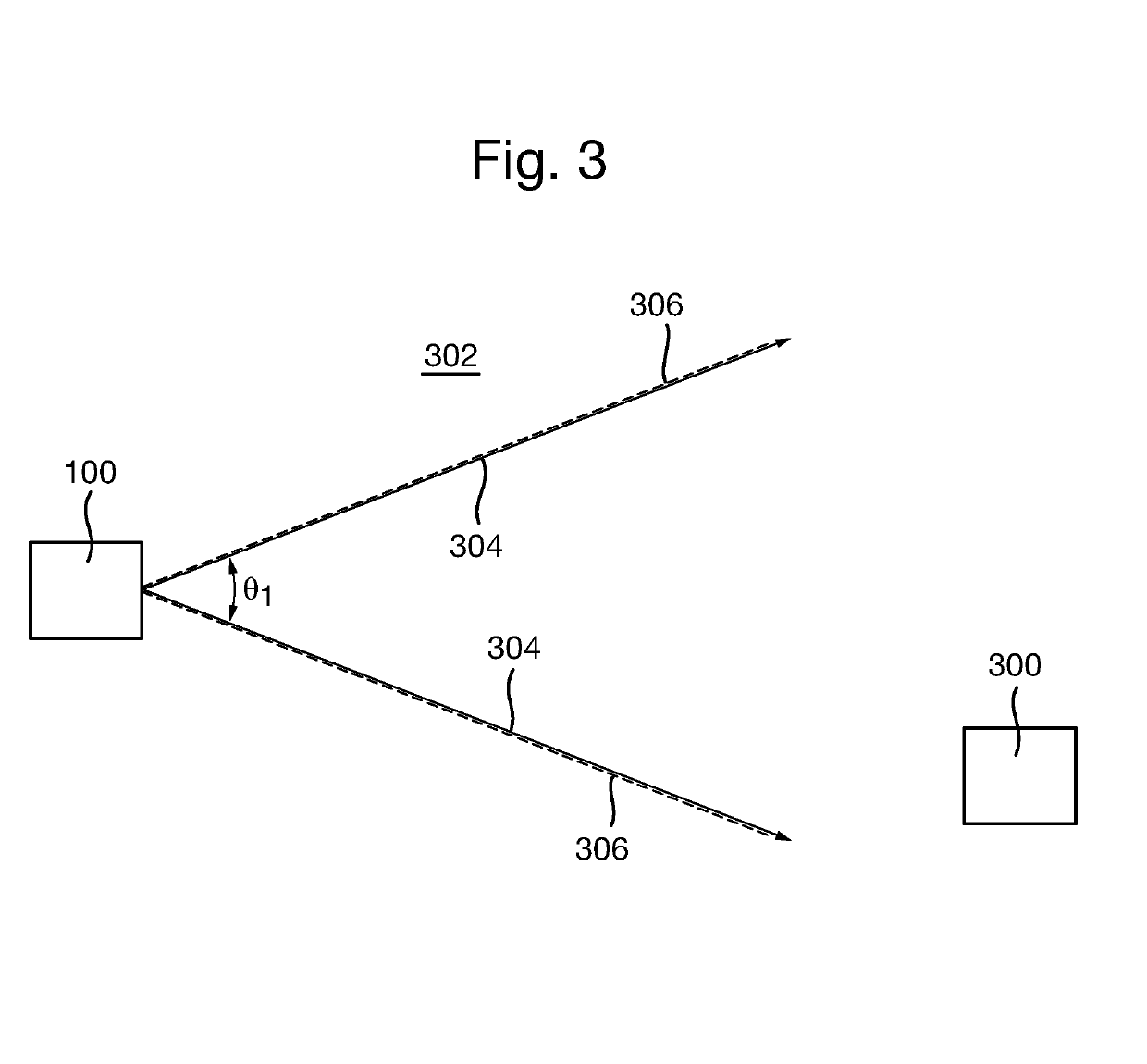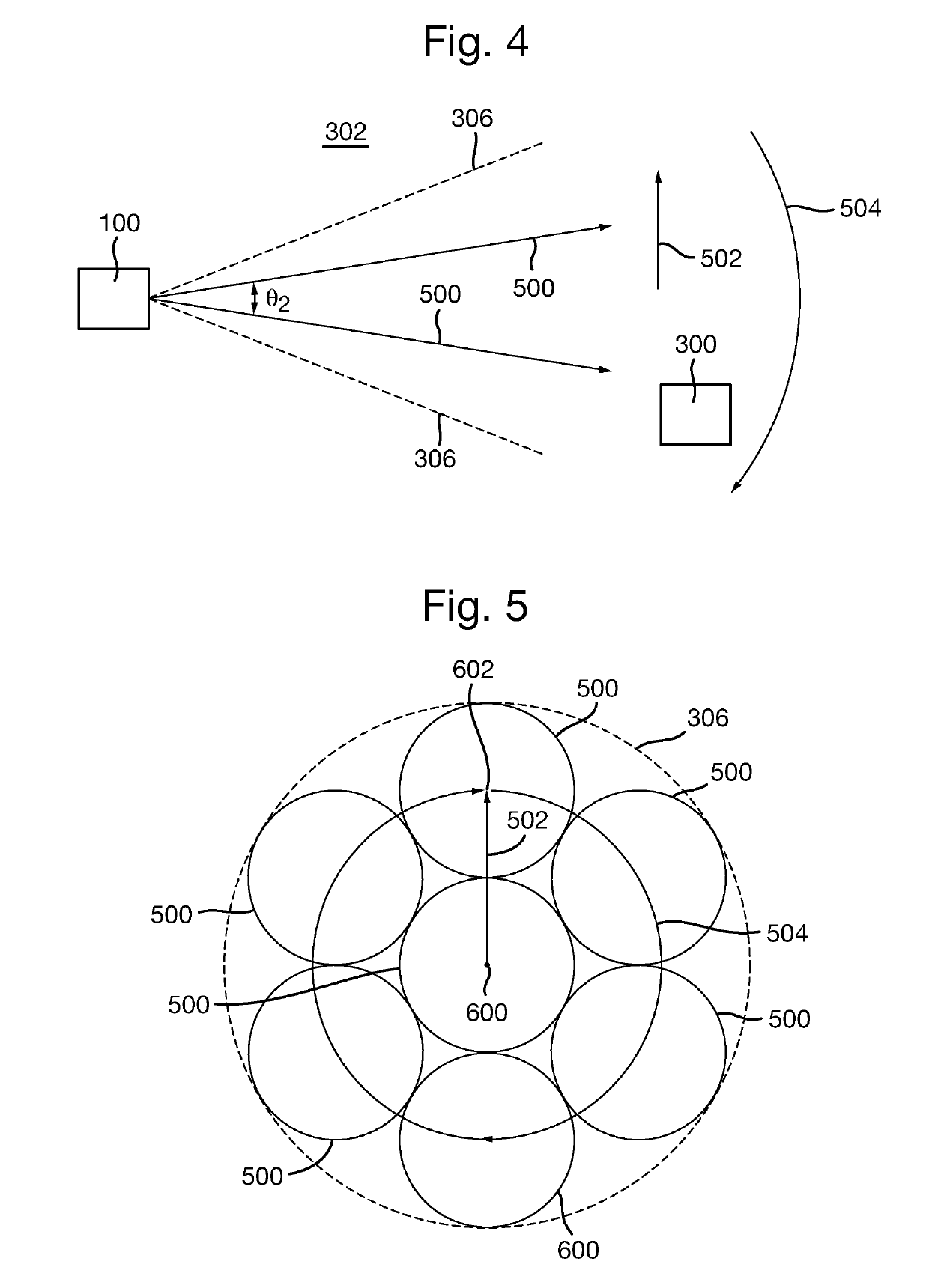Optical communication device
a communication device and optical technology, applied in the field of optical communication devices, can solve the problems of reducing the communication link margin, unable to accurately capture the location, and unable to achieve the effect of reducing the margin of communication, so as to achieve the effect of reliable and accurate location acquisition
- Summary
- Abstract
- Description
- Claims
- Application Information
AI Technical Summary
Benefits of technology
Problems solved by technology
Method used
Image
Examples
Embodiment Construction
[0041]FIG. 1 is a schematic illustration (not to scale) showing an example vehicle 100 in which an embodiment of an optical communications system 102 is implemented.
[0042]The vehicle 100 is an unmanned, submersible (or underwater) vehicle, i.e. a vehicle that is configured to operate while submerged, for example, in water.
[0043]In this embodiment, the optical communications system 102 comprises an optical signal transmitter 104, an optical signal detector 106, and a processor 108.
[0044]The optical signal transmitter 104 is configured to transmit an optical signal (such as a laser beam) from the vehicle 100, as described in more detail later below with reference to FIGS. 2 to 9. In this embodiment, the optical signal transmitter 104 comprises an optical signal generator 110 and lens 112.
[0045]The optical signal generator 110 is configured to generate an optical signal, and send the generated optical signal to the lens 112 for transmission from the vehicle 110. The optical signal gene...
PUM
 Login to View More
Login to View More Abstract
Description
Claims
Application Information
 Login to View More
Login to View More - R&D
- Intellectual Property
- Life Sciences
- Materials
- Tech Scout
- Unparalleled Data Quality
- Higher Quality Content
- 60% Fewer Hallucinations
Browse by: Latest US Patents, China's latest patents, Technical Efficacy Thesaurus, Application Domain, Technology Topic, Popular Technical Reports.
© 2025 PatSnap. All rights reserved.Legal|Privacy policy|Modern Slavery Act Transparency Statement|Sitemap|About US| Contact US: help@patsnap.com



